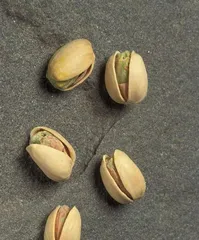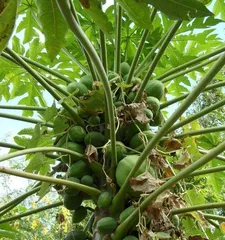Pistachio trees are widely planted fruit trees, and their fruits are delicious and rich in nutritional value. This article will introduce the planting and maintenance methods of pistachio trees.

1. Geographical Distribution and Ecological Environment: Pistachio trees are mainly distributed in regions of China such as North China, Northeast China, Northwest China, and South China, and they prefer a warm and humid environment.
2. Habits and Characteristics of Pistachio Trees: They prefer plenty of sunlight and are suitable for growing in deep, fertile, and well-drained soil.

3. Propagation Methods of Pistachio Trees: Propagation methods mainly include seed propagation, grafting propagation, in vitro propagation, and other methods.
4. Selection of Planting Season: It is suitable to plant in spring or autumn to ensure its growth and development.
5. Preparations Before Planting: Includes multiple links such as site selection, preparing seedlings, and preparing the land.

6. Specific Planting Operations: Includes multiple links such as digging holes, cultivating soil, planting, and fertilizing.
7. Flowering and Fruiting: Pistachio trees usually flower and fruit from April to May and August to September, and the harvest period is generally between September and October.
8. Pest and Disease Control of Pistachio Trees: Mainly includes various pests and diseases such as root rot, mildew, and insect pests. Prevention-first and comprehensive management methods can be used for control.
9. Water Management: Pistachio trees prefer a moist soil environment, but excessive waterlogging should be avoided. Scientific watering management can be carried out.
10. Fertilization Skills: Fertilization should be targeted according to different growth stages and soil conditions to achieve the best results.
11. Canopy Pruning: Canopy pruning can promote the growth and fruiting of pistachio trees and can also prevent branches from growing intertwined.
12. Preventive Measures for Pests and Diseases: Regular inspections can be conducted to identify and address issues promptly.
13. Frequently Asked Questions: Includes potential problems and corresponding solutions that may arise during the planting process of pistachio trees.
14. Harvesting and Storage: Pistachios should be harvested after the fruits are fully ripe, and then appropriate storage treatment should be carried out to avoid losses.
15. Maintenance and Management: Pistachio trees require regular maintenance and management, including pruning, pest and disease control, fertilization, and other aspects to ensure their healthy growth.
Growing pistachio trees requires attention to many issues, including site selection, land preparation, seedling selection, fertilization, and more. Only through comprehensive scientific management and maintenance can pistachio trees grow strong and yield abundantly.